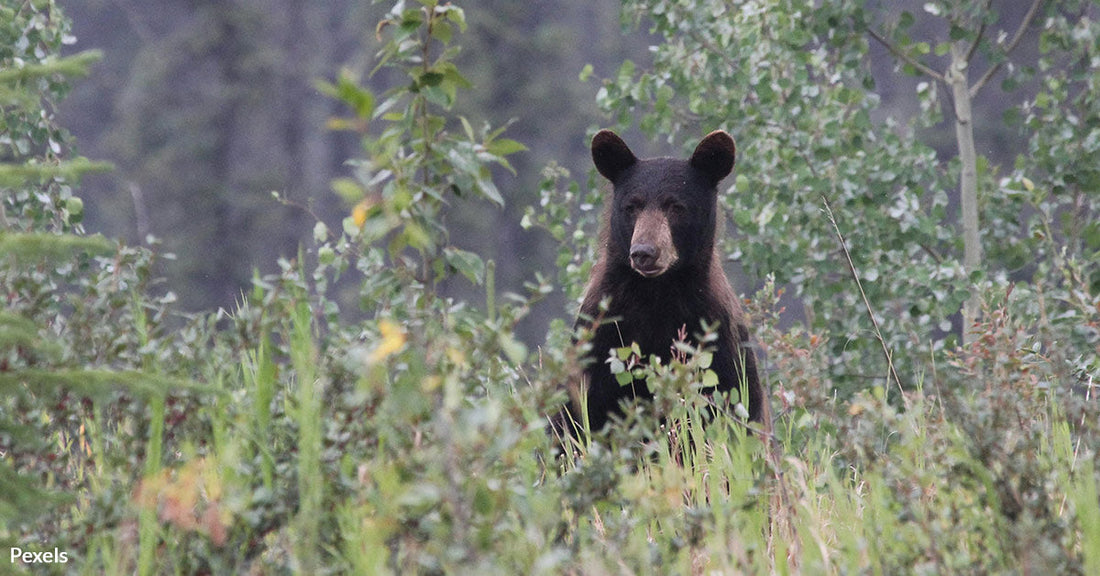What Happens When Bears Emerge From Hibernation Hungry And Ready To Roam
Matthew Russell
Bears stir from their winter slumber as spring takes hold. Their slow return to activity marks a critical shift in the wild. After months of conserving energy, these creatures are eager to find food. The natural world shifts with their awakening, and humans must adjust their behavior accordingly.
The transformation is not as dramatic as many imagine. While bears do not enter a deep coma, their body processes slow to preserve energy. They wake quickly if disturbed.
Many experts advise against any interference with these animals during their vulnerable state. As Wonderopolis reports, small changes in temperature allow them to be alert enough to sense danger. Even a slight intrusion can rouse a bear from its resting phase.

Photo: Pexels
Bears wake from hibernation hungry.
Physiological Shifts and Energy Demands
During hibernation, bears conserve energy by reducing their metabolic rate and heart rate. In winter, they rely on stored fat. Their bodies work to preserve muscle and bone even when movement is minimal, Wonderopolis reports.
Scientists have studied these processes with keen interest, hoping to learn how to protect human health in similar conditions. Research has shown that bears can recycle their own nitrogen and water, maintaining their physical strength throughout the cold months.
Once awake, their hunger is immediate. Bears need to replenish what they lost during hibernation. They search for food over large areas. The emerging vegetation, as well as leftover carcasses from winter, offer a buffet of nutrients. Black bears in particular are known to consume thousands of calories daily after emerging, Bear.org reports. In regions where food is scarce during fall, the animals enter hibernation earlier and wake more slowly. In areas with an abundance of food, the transition from dormancy to full activity happens more rapidly.

Photo: Pexels
Metabolic rates rise after sleep.
Expert Insights on Bear Behavior
Local wildlife officials and researchers provide practical insights into bear behavior.
“Bears wake up hungry, and they are on a mission to find food as soon as the snow melts,” a bear biologist from Vermont Fish and Wildlife told WCAX. Their observation holds true across regions. Whether in a remote forest or a suburban backyard, bears follow similar patterns. They emerge with a keen sense for smell, which helps them locate food sources quickly.
In protected areas like national parks, the return of bears is both an attraction and a challenge. National Park Service officials note that the reawakening period is critical for bears to build up energy reserves for the year ahead. However, human behavior can disrupt this natural process. When visitors leave food unsecured, bears can lose their natural wariness of humans, which creates long-term safety issues for both parties.

Photo: Pexels
Bears emerge with natural energy.
How to React When a Bear Awakens
Humans should take proactive steps to avoid dangerous encounters. The first rule is simple: do not disturb a hibernating or recently awakened bear. Keeping a safe distance is crucial. As Wonderopolis recommends, if you encounter a bear, remain calm. Do not make sudden movements or loud noises that could startle the animal. Experts emphasize that bears can react unpredictably if they feel threatened.
Homeowners in bear country are advised to secure their garbage and remove bird feeders during the spring.
“Taking these precautions now can prevent unwanted and dangerous interactions later,” a wildlife official from Vermont told WCAX.
Electric fences can protect small livestock and pets, reducing the temptation for bears to explore human settlements.
If you accidentally awaken a bear—perhaps by encroaching on its den area—give it space and retreat slowly. It is essential not to run, as this may trigger a chase response. Instead, back away calmly and seek assistance from local wildlife authorities.
Learning about bear behavior beforehand can make a significant difference in how you respond to unexpected encounters.

Photo: Pexels
Vegetation and carcasses attract bears.
Impact on Ecosystems and Human Communities
The bear’s awakening affects more than just the animal itself. Their feeding habits help shape the ecosystem. By foraging for food, bears play a role in seed dispersal and controlling prey populations, NPS reports. This dynamic is a natural part of the food web. Yet, when bears become habituated to human food, the balance can be disrupted. This change threatens both the bear population and the integrity of local habitats.
Local communities must work with wildlife officials to manage these interactions. Bear.org maintains that effective education and preventative measures reduce conflicts. Residents can safeguard their property while ensuring bears continue to thrive in the wild. This cooperative approach benefits everyone involved. It maintains the natural behaviors of these majestic creatures and preserves the wild landscapes they call home.
Bears emerge each spring, hungry and alert. They represent nature’s resilience and its complex rhythms. For those who live near bear habitats or plan to visit, the key is respect. By following guidelines and practicing caution, humans can coexist with bears safely and responsibly. This balance is essential for both wildlife conservation and community safety.

